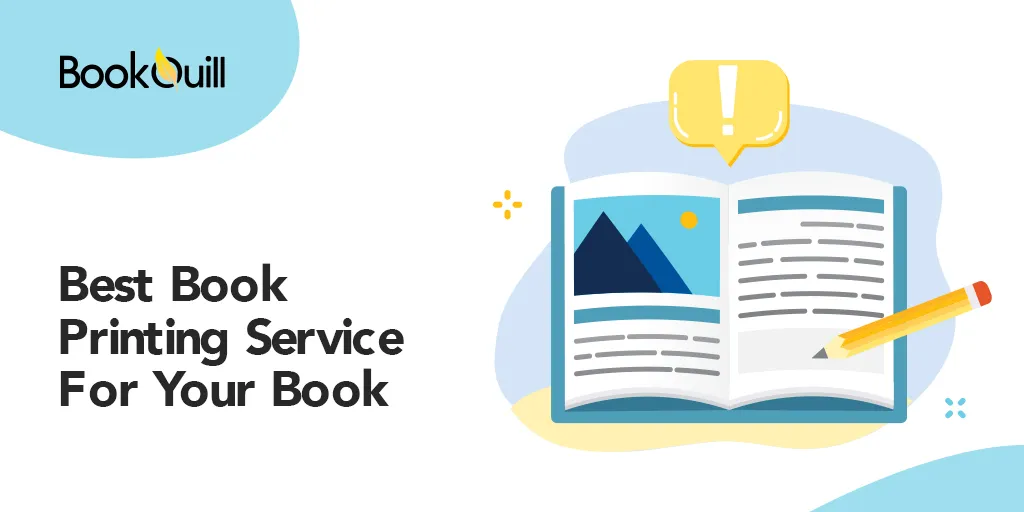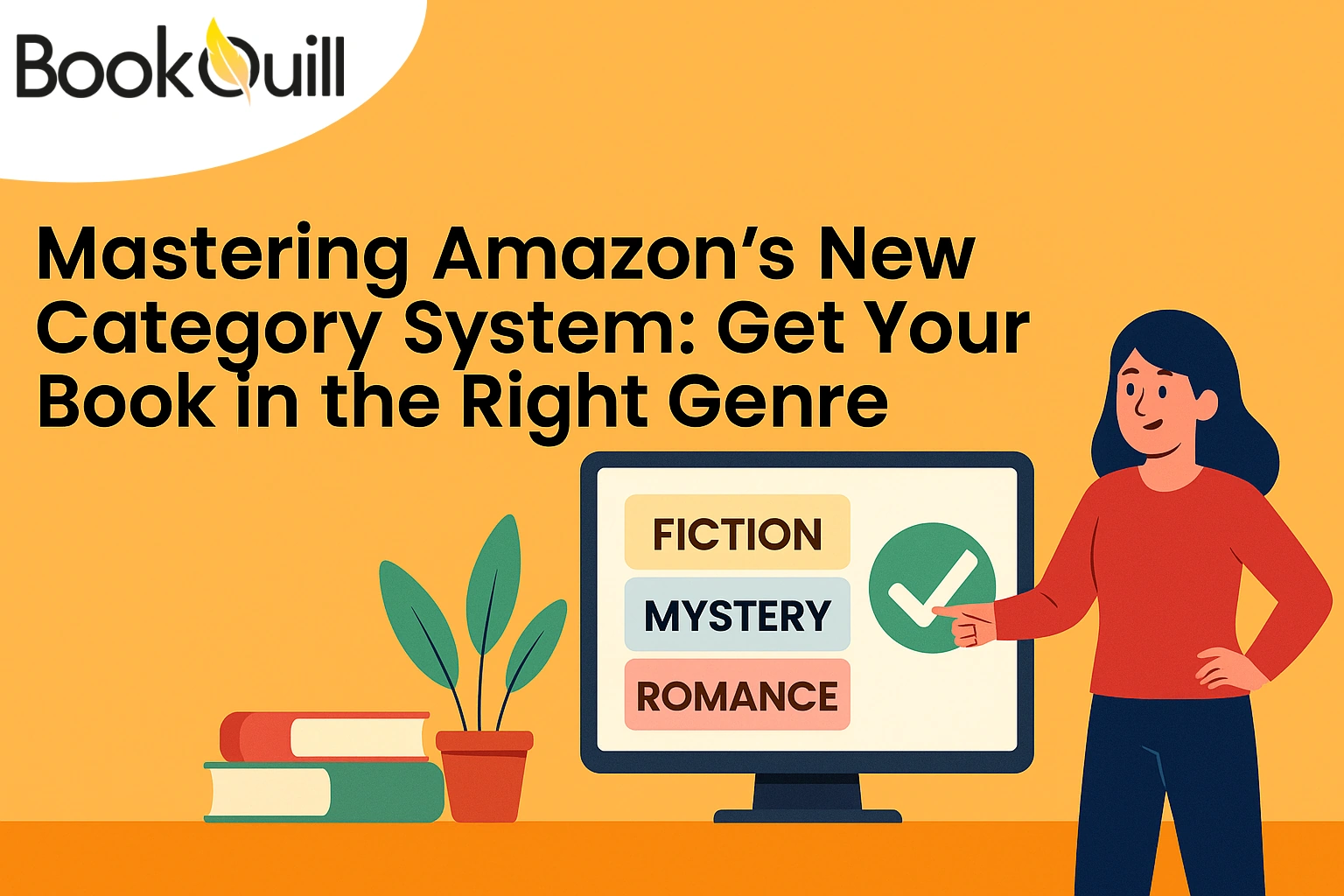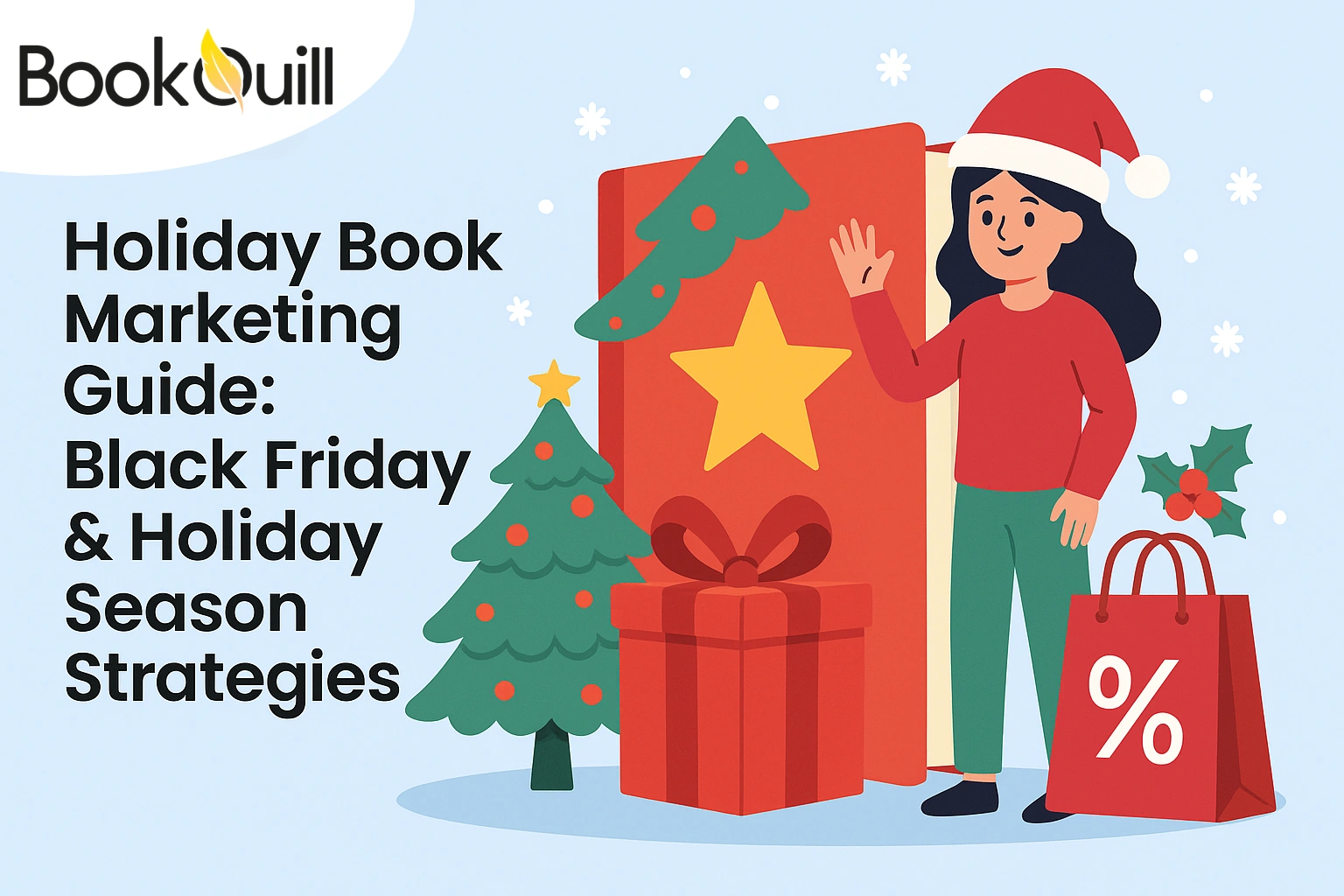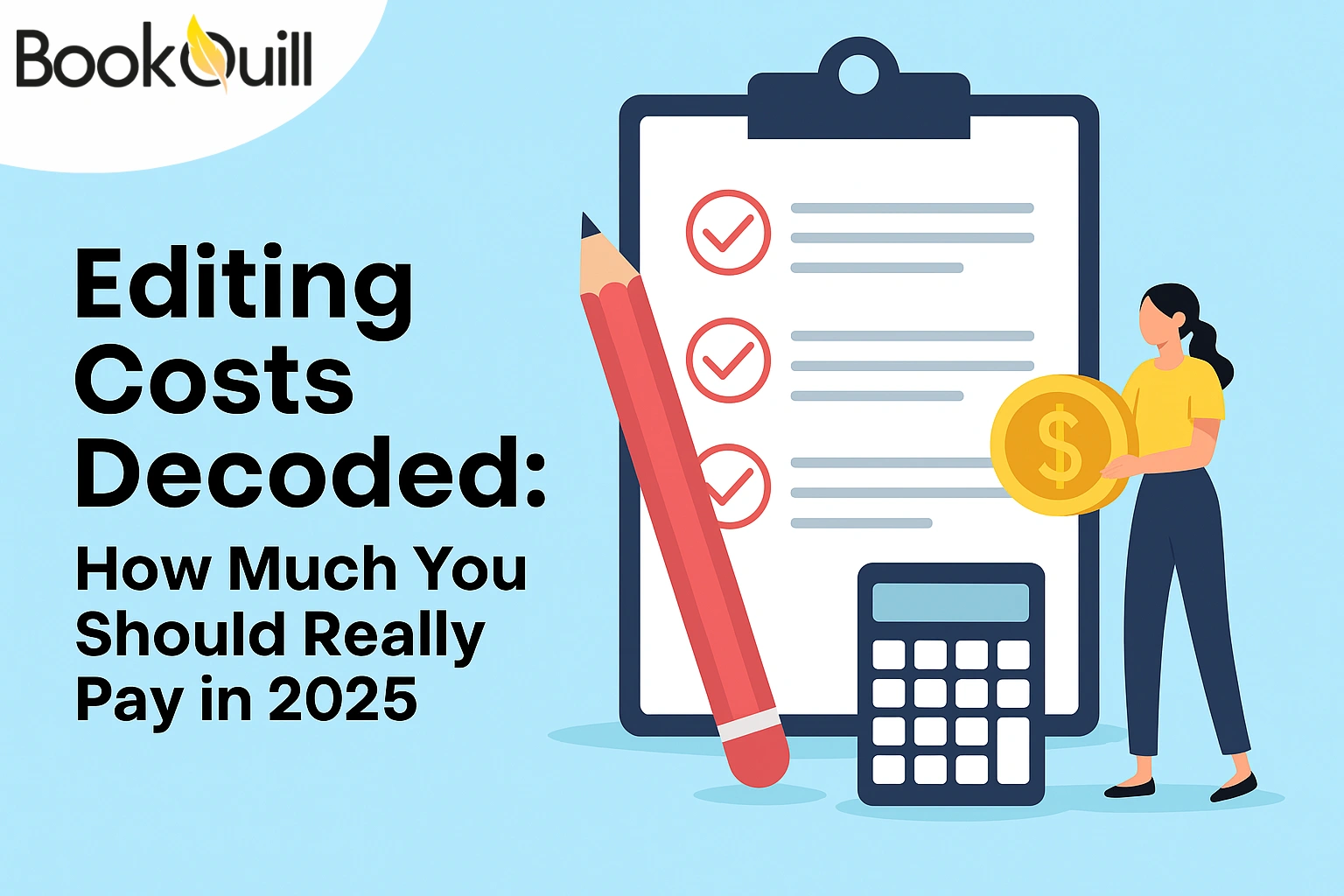Table of Contents
Explore Blogs
Trending on Ebook
Which is the Best Book Printing Service For Your Book?

Book printing trends have drastically changed over the years, especially with the industry becoming digitized over time. This means that most people choose to take the self-publishing route because they were unable to secure a traditional publishing deal or wanted something more convenient.
This brings us to the key question: which book printing service should the writer aim for? Today, most self-publishing authors don’t want to get their books printed for a bookstore. It becomes crucial to understand the different book printing options popular in the industry.
Why Are Traditional Book Stores No Longer Considered Ideal to Sell Books?
Trends within the book publishing service are forever changing. Not to mention that with a decrease in traditional brick-and-mortar bookstores and the ever-changing taste of the target audience, authors want to micromanage their money as much as they can!
Yet, nothing beats having a good old-fashioned printed book in your hand. While the popularity of eBooks still can’t entirely replace physical books, it brings to the question: should authors stop printing their books for the local bookstore altogether?
Despite its advantages, it can still cost double for the average author to design and print a physical book – if it wants to set itself apart from the competition. Physical books continue to be an excellent tool for a writer if he wants to establish himself as a voice of authority in the respective field.
Not only does this help to attract more readers but it leaves a positive effect on potential sales. That’s why, authors are encouraged to opt for both eBook and print versions of their book. Which brings us to a major question:
How Should A First-Time Author Print Their Book?
Things, however, are different for a first-time author. Especially, since the world of print books continue to remain elusive for the average reader. Yet custom book publishing services like BookQuill have made this simpler and more convenient today, more than ever!
Authors today have innumerable options at hand. Our suggestion: connect with a book publishing service that holds its promises on quality and price tag, unlike other standard options in the industry! However, if you are still confused about which kind of printing service should an author opt for? Well, there are two different types of book printing methods. These are as follows:
> Print on Demand
> Offset Printing
-
Option #1: Print on Demand (POD)
The Print On Demand (POD) means exactly what it’s called. This kind of digital print tech produces print books faster than usual. Unlike other types of printing tech, the Print On Demand doesn’t involve longer print runs. This means that it’s comparatively more efficient.
Not to forget that there is a strong focus on quality, so your end product will be striking enough to stand out. The best part is that Print On Demand being a completely digital process is quite straightforward to begin with.
All an author has to do is submit their book file to their selected printer to store the book file in its database. The system will then be prompted and move forward, once the order is placed.
The best part about using professional printing services, like Print On Demand, allows authors to enjoy flexibility with the production process. Additionally, the various options for personalization, further make the POD approach ideal since it includes custom book cover design, paper quality, and print size options – to name a few.
However, every printing process comes with some disadvantages as well. The same also applies to the Print On Demand method. If you are thinking of opting for this method of book printing and binding – know that it is costly in comparison to other kinds of book printing services.
The printing costs are calculated per unit, so if your printing run is smaller, expect the per-unit price to shoot straight up! Despite not being a cheap book printing option, Book publishing services, like this POD remain popular for large quantity prints.
Just check that you don’t have a shortage of print material like a lack of correct paper type or limited availability of relevant resources. Select a design for a quicker run and enjoy the countless benefits of POD.
While BookQuill is a great POD option that’s known for its unique catalog, here are some other service companies that offer a comprehensive range of print-on-demand services to their audience:
Gelato
Ideal for new authors, who are starting afresh in the industry and are on the lookout for affordable printing options. Gelato is well-known for having one of the most reasonable monthly rates in the print-on-demand industry, so get your hands on it today!
Gooten
This is another top-notch POD option that’s ideal for authors located within the USA as most of the print-on-demand products are printed in the country. However, international shipping costs make this slightly pricey, especially if the author is starting afresh within the industry.
Printify
One POD service company that holds a prominent place in the industry is Printify. This is one company that’s perfect if you are in search of custom-made products while being user-friendly at the same time. Perfect for both local and global consumers.
-
Option #2: Offset Printing
The other kind of printing method is Offset Printing. This is the traditional method of printing and is also known as the lithographic printing method.
Being conventional, this printing method involves creating thermal printing plates. These contain the final book layout, which is then transferred onto paper, using printer ink. Offset Printing offers straightforward solutions for custom book printing, as follows:
- First, a book layout is created
- Then it is transferred onto the printing plates
- The printer then uses thermal plates to transfer ink on rubber blankets
- This is then finally applied to the paper
- The end result is a book with high-quality printed pages.
With a traditional book printing method, the color leaves a deep effect. This makes this method of printing have lower costs per unit than the other kind, making it ideal for large orders.
It also depends on the quality of color used for the products. Nonetheless, the offset method of printing is also not free from a few drawbacks. These include some of the most obvious ones, such as:
- The upfront price tag is quite high
- The costs continue to increase when it comes to setting up the final press
- The turnaround time is longer in comparison to the other setup
- Customization is not as easily accessible, despite being in the business for long
BookQuill is a great option if the author is on the lookout for an affordable offset printing service. However, there are other top options in the U.S. as well. These are as follows:
VSL Print
This service company offers personalized offset printing services and creative print solutions. The skilled team makes sure that every crafted piece is as per the client’s request, leaving a strong impression on the viewer.
GotPrint
Another print design service that offers custom professional design services for all kinds of products. Thus, making sure that your product is eye-catching and unique in every way!
Thomas Group Printing
An offset printing service based in NYC, the company has adeptly handled large offset printing jobs with great efficiency! Ideal for authors, located locally.
Which Book Printing Service Method is Best for You?
Once the author knows the basic difference between the two, it becomes easier to choose. However, there are some other factors as well that they should consider before deciding on a printing method for your book:
-
The Number of Books
Before selecting a book printing service, the writer needs to decide on the total print quantity. Whether they require some several hundred then POD may prove to be the right approach. However, if the order is larger than that, then consider offset printing as the ideal printing solution!
-
The Quality of the Final Printed Paper
While both printing methods aim to deliver high-quality book prints, offset printing may generally be considered if the author wants top-notch color reproduction or greater options for paper. The reason is quite simple: aluminum plates are used for the final printing process and it allows the printer to adjust the varying levels of ink accordingly on the printing press. If the printer needs a particular color or the author wants to publish on a special kind of paper then offset printing could just be what they are looking for!
-
Total Turnaround Time
Between POD and offset printing, the former has a higher turnaround time, making it a comparatively faster option than the print jobs performed by offset. That’s simply because there is no setting up the plates for the final production press. So if the author is running out of time, has an urgent book order, or just needs something fast then go for Print On Demand!
-
Countless Options for Customization
If customization is the key to a high-end product then go for Offset. That’s because this kind of printing service can present greater customization options in comparison to the other. And because the printer has greater flexibility with ink usage, paper quality, and other aspects, an author can truly spin the final result exactly how they like it! This is great if the author wants the book to leave a long-lasting impression on the target reader!
-
Considerations for Service Costs
This one aspect is probably a deal breaker for authors everywhere. Many would opt for one because the other broke the bank! While POD is expected to be the pricier option since it has longer print runs, it also depends on the quantity that going to be published.
Authors interested in printing a couple of physical books will likely find Print On Demand to be a better and considerably cost-effective option. However, if the quantity of books exceeded a hundred then go for Offset for it would prove to be a better option among the two.
For instance, a normal hardcover book printing costs about $20.99 – $24.99. Whereas if you want to opt for cheaper options, it would be around $17 to $20.
If the idea is to choose a black and white paperback book that’s fewer than 108 pages, it will cost as little as $2.30 per book. Whereas the standard 300-page paperback novel runs closer to $5 or $6 per book. Larger trim sizes, hardcovers, and colored ink can take the price up a notch higher.
Wrapping It Up,
As we come to the end of this article, choosing between Print On Demand and Offset Printing ultimately depends on the author – their budget, time, and several other requirements.
That is why, authors are advised to ask around or google something as simple as “book printing near me” to find out what options are accessible to them before moving forward with the book journey.
Search and seek professional printing services near me for the best search results. Our suggestion- opt for a service, which makes sure that the final stage of your book production goes smoothly and efficiently. Like BookQuill. Connect with us now!
Frequently Asked Questions (FAQs)
Q. Which is the best printing method for books?
Offset Printing is ideal for printing a large volume of high-quality books. The printing process involves transferring images from a plate to a cylinder and then onto the page of the finished book.
Q. Why are print books so costly?
These are innumerable factors that contribute to the high cost of print books. Such as distribution costs, the raw material – paper, other physical resources needed, and author royalties. Publishers are also expected to incur marketing expenses and get a book into the public eye.
Q. Why do most authors choose to take the self-publishing route?
There are several reasons for an author to self-publish. Self-publishing royalties are significantly higher than the royalties earned via traditional publishing
This is because the writer is the author, marketer, and publisher, so they get to keep most of the profits.




